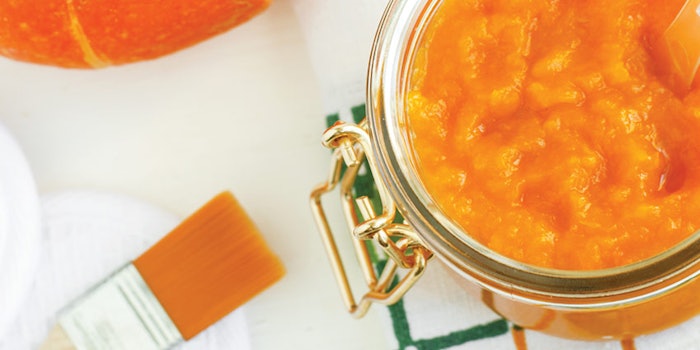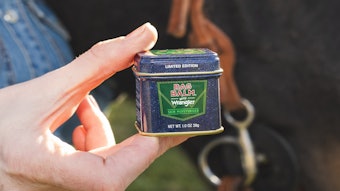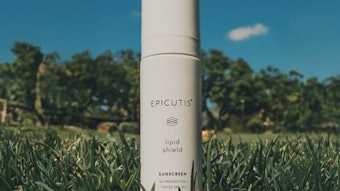
Editor's note: This article has been adapted with permission from our sister brand's, Skin Inc.'s, monthly column, "Jar Deconstructed." In it, the editors review research and commercial reports about an ingredient of interest, along with spa and professional products that apply said ingredient. It is offered soley for your consideration and further investigation. This month's piece is borrowed from the October 2019 edition.
Behold: the pumpkin. A humble gourd and jack-o-lantern in the rough. Pumpkins are indigenous to the Western hemisphere and have been grown in North America for 5,000 years. In 1584, French explorer Jacques Cartier reported finding gros melons, which translated in English as pompions. This name eventually evolved into pumpkin.1
Pumpkin, or Cucurbita pepo, the most common variety, is widely used as food and in traditional Chinese and Ayurvedic folk medicine as a natural anti-inflammatory, an antiviral agent, an analgesic, for urinary disorders, to treat ulcers, and as an anti-diabetic and antioxidant.2 Additional properties reported for both the pulp and seeds include wound healing, tumor growth inhibition, hypoglycemic effects and immunomodulation.
Active Constituents
The main active constituents in pumpkin belong to groups including: cucurbitosides, multiflorane-type triterpenoids, carotenoids, ent-kaurane type diterpenes and cucurbitaglycosides.2 In relation, a literature survey noted pharmacological functions such as hepatoprotection; inhibiting benign prostatic hyperplasia; and antioxidant, anticancer, antimicrobial, anti-inflammatory, antidiabetic and anti-ulcer activities—which support the uses described in traditional medicine.
Proteases also are present in pumpkin. As one cosmetic ingredient supplier3 explains, “One of the interesting properties of the Cucurbita genus is that when the seeds are mature, the plant begins a rapid self-degradation designed to provide a fertile environment for the seeds to develop.” This is common with many plants and is accomplished by proteases—the proteins that break down other proteins.
In fact, these proteases, also known as proteinases and proteolytic enzymes, digest the bonds in proteins and break them down into peptides and, finally, amino acids. As estheticians are already aware, such topically applied proteases (pumpkin peel, anyone?) can safely digest dead skin proteins without affecting the healthy, living tissue.
Pumpkin seeds also contain rich unsaturated fatty acids, phytoestrogens and vitamin E, which have potential pharmaceutical, nutraceutical and cosmeceutical properties. According to the Indonesian Journal of Cancer Chemoprevention,4 the predominant unsaturated fatty acids in pumpkin seeds can play a role in disease prevention and promote health. The phytoestrogen compounds present, secoisolariciresinol and lariciresinol, can prevent hyperlipidemia and osteoporosis in menopausal women. Also, tocopherols in vitamin E are known for their free radical-scavenging, anti-aging and antioxidant benefits.4
Photoaging and UV Damage Prevention
Considering its antioxidant activity, pumpkin’s use for skin protection and UV damage defense comes as no surprise. A report published in the Journal of The Korean Society of Food Science and Nutrition tested the protective effects of extracts from certain food materials against UVB-induced photoaging in human skin fibroblast cells. Pumpkin, along with red paprika, tomato, chestnut shell and Jinuni bean, reversed the elevated levels of reactive oxygen species production and prevented reductions in collagen levels. The extracts also inhibited elevated levels of MMP-1 and MMP-3 caused by UVB exposure; although notably, chestnut shell showed the greatest efficacy.5
Another study, in Industrial Crops and Products,6 looked at amaranth and pumpkin seed oil for their potential as nanocarriers to bolster sunscreen filters. According to the authors, natural oils provide antioxidant, nutraceutical, anti-aging, anti-inflammatory, antimicrobial and emollient properties. This study therefore used these oils to create nanostructured lipid carriers (NLCs) to simultaneously entrap and deliver two UVA and UVB filters—i.e., diethylamino hydroxybenzoyl hexyl benzoate and 2-ethylhexyl salicylate—plus the antioxidant hesperidin. The resulting formulas showed excellent stability and provided controlled release of the three actives. The authors concluded these herbal cosmetic formulations provided superior photoprotection and enhanced antioxidant properties.6
More recent research, reported in the European Journal of Pharmaceutical Sciences,7 combined four U.S. Food and Drug Administration-approved (FDA-approved) UV filters with melatonin and pumpkin seed oil to produce a broad-spectrum sunscreen cream. According to the authors, the idea was to provide optimum sun protection along with enhanced antioxidant activity. In an animal model, rats were exposed to broad-spectrum UV radiation for 28 days. The test group receiving the sunscreen every day prior to UV radiation showed greater skin thickness and less edema, measured via in vivo antioxidant activities, inflammatory cytokines, collagen content, histopathological examination and the expression of specific genes—all of which established the protective activity of the formulation.7
Antioxidant and Antibacterial Benefits
While the antioxidant activity of pumpkin is reported above, another study expands these benefits to include antibacterial activity. Work published in the International Organization of Scientific Research (IOSR) Journal of Pharmacy determined these activities in a specific Sri Lankan pumpkin variety, Curcurbita maxima; particularly the seeds, skin and leaves.8 Interest in these components arose from findings that 18-21% of the fruit was being wasted during food processing.
The methanol and acetone extracts of pumpkin skin, and ethyl acetate extract of pumpkin, seed showed antibacterial activity against Staphylococcus aureus. The methanol extract of pumpkin skin and ethyl acetate extract of pumpkin leaves showed activity against Bacillus subtilis.8
Similarly, the Medicinal Chemistry review2 reported that extracts of leaves from C. pepo demonstrated the broadest spectra of activity against Providencia stuartii, Pseudomonas aeruginosa, K. pneumoniae, Escherichia coli, Enterobacter aerogenes and Enterobacter cloacae. Other research found a methanolic extract C. pepo fruit provided moderate to high activity against numerous bacterial strains: Bacillus cereus, Escherichia coli, Pseudomonas aeruginosa and Candida albicans, to name a few.2
Hyperpigmentation Protection and Soothing Effects
In addition to preventive effects in skin, a paper published in the Journal of Cosmetic Dermatology9 found that a red pumpkin seed extract could affect melanosome transfer. This suggests potential hyperpigmentation-protection benefits. During the study, treatment of keratinocytes with the extract prior to UVB exposure enhanced their intracellular antioxidant system, activating Nrf2 signaling and therefore suppressing MS transfer stimulated by the ROS generated by UVB.9
Skin soothing, anti-inflammatory effects have also been attributed to pumpkin.2 In particular, 3β-hydroxycholest-7-en-24-one derived from C. pepo seeds was isolated and evaluated for macrophage activation. The results suggested this triterpene—an isolated steroid—has potential as an anti-inflammatory agent.
Makeup Removal
Finally, as noted, pumpkin seed oil holds high amounts of fatty acid constituents and tocopherols. As such, work presented in the Journal of Surfactants and Detergents explored the makeup removal efficacy of pumpkin seed oil using UV/vis spectroscopy. A stable makeup remover was formulated using 5-15% pumpkin seed oil; results indicated the addition of the pumpkin seed oil significantly enhanced the ability of the formula to remove a foundation. Specifically, the oil removed 79.92%, 41.02% and 23.54% of a foundation and liquid and pen eyeliners, respectively. The pumpkin seed oil remover performed better overall than the benchmark while also ensuring skin hydration.10
In the Spa
It should come as no surprise that the spa industry loves pumpkin, especially when it comes to seasonal treatments and gentle exfoliation.
The fall brings in a host of pumpkin-laced treatments at the Spa at the Hotel Hershey (Hershey, Pennsylvania). In addition to treatments like the Pumpkin Souffle Wrap and the Great Pumpkin Facial, the spa offers the Pumpkin Spice Massage (50/80 min., M-Th $145/205, F-Su $155-215) from Oct. 1-Nov. 30, 2019, where a classic Swedish massage is delivered with an organic oil blend of pumpkin seed oil, sesame, jojoba, sunflower and apricot along with nutmeg, orange, clove, cinnamon, ginger and cardamon essential oils.
Exfoliation is the main action of pumpkin for the Harvest Facial (50 min., $150) at The Spa at Norwich Inn (Norwich, Connecticut). The facial was designed to repair summer damage with a deep cleaning and a load of antioxidants. After the exfoliation with pumpkin enzymes, a milk and honey mask is applied to replenish skin.
Blue Point Medical Spa in Las Vegas also offers facial exfoliation with pumpkin as part of its Pumpkin Enzyme Facial. The treatment is recommended for normal to oily skin types. This superficial enzyme peel removes unwanted debris, enhances cellular regeneration and enables better absorption of products.
For those looking to add pumpkin treatments to your menu not only for fall but for all year long, there are a number of peels and masks on the professional market to fit the bill.
Sircuit Cosmeceuticals uses pumpkin in its Youth Accelerator Pro +20% Pumpkin Enzyme Peel. The peel is formulated with both pumpin extract and pumpkin ferment for antioxidant and exfoliation benefits, respectively. The product also contains additional exfoliants as well as beta-fructan and albumen for moisturization.
Pumpkin pulp is used by Dermaquest in its Mini Pumpkin Mask, which was designed for those with mild forms of acne and hyperpigmentation. The pulp gently decongests clogged pores and soothes red, inflamed skin for a polished complexion.
Pumpkin is the star of BiON Skincare’s Pumpkin Enzyme Mask, which utilizes the fruit’s pumpkin puree, enzyme ferment and seed extract for exfoliation, moisturization and anti-aging benefits. “Pumpkin contains dozens of beneficial nutrients which can help to reverse the signs of aging and re-texturize the skin while adding essential hydration,” noted Larry Lockhart, owner and CEO of BiON.
Glycolic acid is combined with pumpkin in Aesthetic Back Bar’s Pumpkin Enzyme Mask II, which can be used on all skin types. Both pumpkin and 12% glycolic acid exfoliate skin, while pumpkin also supplies a host of nutrients to help reverse the signs of aging.
Pumpkin takes a cleansing turn in Glo Skin Beauty’s Pumpkin Enzyme Scrub, where jojoba beads are combined with pumpkin for physical and chemical exfoliation. The company recognized the popularity and efficacy of the ingredient before using it. “Reported as one of the top 10 trendy beauty ingredients of 2019, pumpkin has officially moved beyond lattes and onto bathroom shelves and spa treatment rooms—and for good reason,” noted Anna De La Cruz, director of brand development.
Conclusions
We hope this review of the benefits pumpkins can provide inspire you with a newly found respect for the noble squash. No doubt it could land your business smashing success.
References
- www.history.com/topics/halloween/pumpkin-facts
- www.omicsonline.org/open-access/review-of-cucurbita-pepo-pumpkin-its-phytochemistry-andpharmacology-2161-0444-1000316.php?aid=66600
- www.formulatorsampleshop.com/FSS-Pumpkin-Enzyme-p/fss20496.htm
- https://ijcc.chemoprev.org/index.php/ijcc/article/view/225
- http://agris.fao.org/agris-search/search.do?recordID=KR2018004376
- www.sciencedirect.com/science/article/abs/pii/S0926669018305922
- www.sciencedirect.com/science/article/pii/S0928098718304950
- www.researchgate.net/profile/Srianthie_Deraniyagala/publication/331150069_The_Study_of_Antioxidant_and_Antibacterial_Properties_of_Skin_Seeds_and_Leaves_of_The_Sri_Lankan_Variety_of_Pumpkin/links/5c67f82a92851c1c9de4bc47/The-Study-of-Antioxidant-and-Antibacterial-Properties-of-Skin-Seeds-and-Leaves-of-The-Sri-Lankan-Variety-of-Pumpkin.pdf
- https://onlinelibrary.wiley.com/doi/abs/10.1111/jocd.12716
- https://aocs.onlinelibrary.wiley.com/doi/abs/10.1002/jsde.12315










